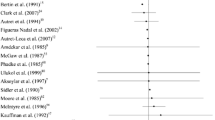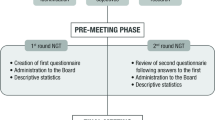Abstract
Paracetamol (acetaminophen) and ibuprofen are the most frequently purchased over-the-counter (OTC) medicines for children. Parents purchase these medicines for the treatment of fever and pain. In some countries other NSAIDs such as aspirin (acetylsalicylic acid) and dipyrone are available.
We aimed to perform a narrative review of the efficacy and toxicity of OTC analgesic medicines for children in order to give guidance to health professionals and parents regarding the treatment of pain in a child.
Neither aspirin nor dipyrone are recommended for OTC use because of the association with Reye’s syndrome for the former and the risk of agranulocytosis for the latter. Both paracetamol and ibuprofen are effective for the treatment of mild pain in children. Adverse effects with both medicines are infrequent. Ibuprofen is an NSAID and therefore there is a greater risk of gastrointestinal adverse effects and hypersensitivity.
Aspirin and dipyrone should be avoided. Paracetamol is the drug of first choice for mild pain in children because of its favourable safety profile. For the treatment of significant musculoskeletal pain, ibuprofen is the drug of first choice.
Similar content being viewed by others
References
Nydert P, Kimland E, Kull I. Over-the-counter drug use: estimations within the Swedish paediatric population. Eur J Pediatr 2011; 170: 583–8
Trajanovska M, Manias E, Cranswick N, et al. Use of over-the-counter medicines for young children in Australia. J Paediatr Child Health 2010; 46: 5–9
Duncan P, Aref-Adib G, Venn A, et al. Use and misuse of aspirin in rural Ethiopia. East Afr Med J 2006; 83: 31–6
Donald K, Hall S, Seaton C, et al. Is non-therapeutic aspirin use in children a problem in South Africa? South Afr Med J 2011; 101: 823–8
McIntyre J, Conroy S, Collier J, et al. Use of over-the-counter medicines in children. Int J Pharm Pract 2003; 11: 209–15
McIntyre J. Management of fever in children. Arch Dis Child 2011; 96: 1173–4
Purssell E. Systematic review of studies comparing combined treatment with paracetamol and ibuprofen, with either drug alone. Arch Dis Child 2011; 96: 1175–9
Rosefsky JB. Ibuprofen safety. Pediatrics 1992; 89: 166–7
Kokki H, Hendolin H, Maunuksela E, et al. Ibuprofen in the treatment of postoperative pain in small children: a randomized double-blind-placebo controlled parallel group study. Acta Anaesthesiologica Scandinavica 1994; 38: 467–72
Perrott DA, Piira T, Goodenough B, et al. Efficacy and safety of acetaminophen vs ibuprofen for treating children’s pain or fever: a meta-analysis. Arch Pediatr Adolesc Med 2004; 158: 521–6
Clark E, Plint AC, Correll R, et al. A randomized, controlled trial of acetaminophen, ibuprofen and codeine for acute pain relief in children with musculoskeletal trauma. Pediatrics 2007; 119: 460–7
Bradley RL, Ellis PE, Thomas P, et al. A randomized clinical trial comparing the efficacy of ibuprofen and paracetamol in the control of orthodontic pain. Am J Orthod Dentofacial Orthop 2007; 132: 511–7
Chan TYK, Chan AWK. Aminopyrine-induced blood dyscrasias: still a problem in many parts of the world. Pharmacoepidemiol Drug Saf 1996; 5: 215–9
Nor Aripin KNB, Choonara I. The management of paracetamol poisoning. Paediatr Child Health 2009; 19: 492–7
Shepherd M, Aickin R. Paracetamol versus ibuprofen: a randomized controlled trial of outpatient analgesia efficacy for paediatric acute limb fractures. Emerg Med Australas 2009; 21: 484–90
Sánchez-Borges M, Capriles-Behrens E, Caballero-Fonseca F. Hypersensitivity to non-steroidal anti-inflammatory drugs in childhood. Pediatr Allergy Immunol 2004; 15: 376–80
Kidon MI, Kang LW, Chin CW, et al. Nonsteroidal anti-inflammatory drug hypersensitivity in preschool children. Allergy Asthma Clin Immunol 2007; 3: 114–22
Grimaldi-Bensouda L, Abenhaim L, Michaud L, et al. Clinical features and risk factors for upper gastrointestinal bleeding in children: a case-crossover study. Eur J Clin Pharmacol 2010; 66: 831–7
Dowd JE, Cimaz R, Fink CW. Nonsteroidal anti-inflammatory drug-induced gastroduodenal injury in children. Arthritis Rheum 1995; 38: 1225–31
Schaller S, Kaplan BS. Acute nonoliguric failure in children associated with nonsteroidal anti-inflammatory agents. Pediatr Emerg Care 1998; 14: 416–8
Ulinksi T, Guigonis V, Dunan O, et al. Acute renal failure after treatment with non-steroidal anti-inflammatory drugs. Eur J Pediatr 2004; 163: 148–50
Kidon MI, See Y. Adverse drug reactions in Singaporean children. Singapore Med J 2004; 45: 574
Titchen T, Cranswick N, Beggs S. Adverse drug reactions to nonsteroidal anti-inflammatory drugs, COX-2 inhibitors and paracetamol in a paediatric hospital. Br J Clin Pharmacol 2005; 59: 718–23
Autret-Leca E, Bensouda-Grimaldi L, Maurage C, et al. Upper gastrointestinal complications associated with NSAIDs in children. Therapie 2007; 62: 173–6
Clarkson A, Choonara I. Surveillance for fatal suspected adverse drug reactions in the UK. Arch Dis Child 2002; 87: 462–7
Lesko SM, Mitchell AA. An assessment of the safety of pediatric ibuprofen: a practitioner-based randomized clinical trial. JAMA 1995; 273: 929–33
Hall AH, Smolinske SC, Conrad FL, et al. Ibuprofen overdose: 126 cases. Ann Emerg Med 1986; 15: 1308–13
Hall AH, Smolinske SC, Kulig KW, et al. Ibuprofen overdose: a prospective study. West J Med 1988; 148: 653–6
Linden CH, Townsend PL. Metabolic acidosis after acute ibuprofen overdosage. J Pediatr 1987; 111: 922–5
Zuckerman GB, Uy CC. Shock, metabolic acidosis, and coma following ibuprofen overdose in a child. Ann Pharmacother 1995; 29: 869–71
Van Biljon G. Reversible renal failure associated with ibuprofen in a child. S Afr Med J 1989; 76: 34–5
Kim J, Gazarian M, Verjee Z, et al. Acute renal insufficiency in ibuprofen overdose. Pediatr Emerg Care 1995; 11: 107–8
Giles HMcC. Encephalopathy and fatty degeneration of the viscera. Lancet 1965; I: 1075
Starko KM, Ray CG, Dominguez LB, et al. Reye’s syndrome and salicylate use. Pediatrics 1980; 66: 859–64
Belay ED, Bresee JS, Holman RC, et al. Reye’s syndrome in the United States from 1981 through 1997. N Engl J Med 1999; 340: 1377–82
Hedenmalm K, Spigset O. Agranulocytosis and other blood dyscrasias associated with dipyrone (metamizole). Eur J Clin Pharmacol 2002; 58: 265–74
Hamerschlak N, Maluf E, Biasi Cavalcanti A, et al. Incidence and risk factors for agranulocytosis in Latin American countries: the Latin study. Eur J Clin Pharmacol 2008; 64: 921–9
Bárzaga Arencibia Z, Novoa Sotomayer D, Caballero Mollinedo N, et al. Adverse drug reactions in children in Camagüey Province, Cuba. Arch Dis Child 2010; 95: 474–7
Rumack BH. Acetaminophen overdose in young children: treatment and effects of alcohol and other additional ingestants in 417 cases. Am J Dis Child 1984; 138: 428–33
Alander SW, Dowd MD, Bratton SL, et al. Pediatric acetaminophen overdose: risk factors associated with hepatocellular injury. Arch Pediatr Adolesc Med 2000; 154: 346–50
Rivera-Penera T, Gugig R, Davis J, et al. Outcome of acetaminophen overdose in pediatric patients and factors contributing to hepatotoxicity. J Pediatr 1997; 130: 300–4
Heubi JE, Barbacci MB, Zimmerman HJ. Therapeutic misadventures with acetaminophen: hepatotoxicity after multiple doses in children. J Pediatr 1998; 132: 22–7
Bailey B, Lalkin A, Kapur BM, et al. Is chronic poisoning with acetaminophen in children a frequent occurrence in Toronto? Can J Clin Pharmacol 2001; 8: 96–101
Morton NS, Arana A. Paracetamol-induced fulminant hepatic failure in a child after 5 days of therapeutic doses. Paediatr Anaesth 1999; 9: 463–5
Mahadevan SBK, McKiernan PJ, Davies P, et al. Paracetamol induced hepatotoxicity. Arch Dis Child 2006; 91: 598–603
McIntire SC, Rubenstein RC, Gartner Jr JC, et al. Acute flank pain and reversible renal dysfunction associated with nonsteroidal anti-inflammatory drug use. Pediatrics 1993; 92: 459–60
Zaffanello M, Brugnara M, Angeli S, et al. Acute non-oliguric failure and cholestatic hepatitis induced by ibuprofen and acetaminophen: a case report. Acta Paediatrica 2009; 98: 903–5
Sánchez-Borges M, Caballero-Fonseca F, Capriles-Hulett A, et al. Hypersensitivity reactions to nonsteroidal anti-inflammatory drugs: an update. Pharmaceuticals 2010; 3: 10–8
Boussetta K, Ponvert C, Karila C, et al. Hypersensitivity reactions to paracetamol in children: a study of 25 cases. Allergy 2005; 60: 1174–7
Beasley R, Clayton T, Crane J, et al. Association between paracetamol use in infancy and childhood, and risk of asthma, rhinoconjunctivitis, and eczema in children aged 6–7 years: analysis from phase three of the ISAAC programme. Lancet 2008; 372: 1039–48
Etminan M, Sadatsafavi M, Jafari S, et al. Acetaminophen use and the risk of asthma in children and adults: a systematic review and metaanalysis. Chest 2009; 136: 1316–23
Wickens K, Beasley R, Town I, et al. The effects of early and late paracetamol exposure on asthma and atopy: a birth cohort. Clin Exp Allergy 2011; 41: 399–406
Foliaki S, Pearce N, Björkstén B, et al. Antibiotic use in infancy and symptoms of asthma, rhinoconjunctivitis, and eczema in children 6 and 7 years old. International Study of Asthma and Allegies in Childhood Phase III. J Allergy Clin Immunol 2009; 124: 982–9
Tapiainen T, Dunder T, Möttönen M, et al. Adolescents with asthma or atopic eczema have more febrile days in early childhood: a possible explanation for the connection between paracetamol and asthma? J Allergy Clin Immunol 2010; 125: 751–2
Schnabel E, Heinrich J, LISA Study Group. Respiratory tract infections and not paracetamol medication during infancy are associated with asthma development in childhood. J Allergy Clin Immunol 2010; 126: 1071–3
Oddy WH, de Klerk NH, Sly PD, et al. The effects of respiratory infections, atopy, and breastfeeding on childhood asthma. Eur Respir J 2002; 19: 899–905
Jackson DJ, Gangnon RE, Evans MD, et al. Wheezing rhinovirus illnesses in early life predict asthma developing in high-risk children. Am J Respir Crit Care Med 2008; 178: 667–72
Lowe AJ, Carlin JB, Bennett CM, et al. Paracetamol use in early life and asthma: prospective birth cohort study. BMJ 2010; 341: c4616
von Mutius E, Illi S, Hirsch T, et al. Frequency of infections and risk of asthma, atopy and airway hyperresponsiveness in children. Eur Respir J 1999; 14: 4–11
Celedón JC, Fuhlbrigge A, Rifas-Shiman S, et al. Antibiotic use in the first year of life and asthma in early childhood. Clin Exp Allergy 2004; 34: 1011–6
Farquhar H, Crane J, Mitchell EA, et al. The acetaminophen and asthma hypothesis 10 years on: a case to answer. J Allergy Clin Immunol 2009; 124: 649–51
Acknowledgements
No sources of funding were used to prepare this review. The authors have no conflicts of interest that are directly relevant to the content of this review.
Author information
Authors and Affiliations
Corresponding author
Rights and permissions
About this article
Cite this article
Arencibia, Z.B., Choonara, I. Balancing the Risks and Benefits of the Use of Over-the-Counter Pain Medications in Children. Drug Saf 35, 1119–1125 (2012). https://doi.org/10.1007/BF03261998
Published:
Issue Date:
DOI: https://doi.org/10.1007/BF03261998




